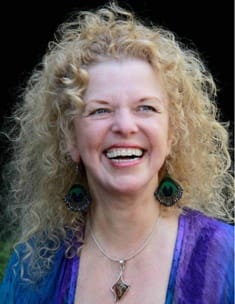Are You Addicted to Anxiety?

Anxiety is a psychological and physiological state characterized by somatic, emotional, cognitive, and behavioral components. The root meaning of the word anxiety is ‘to vex or trouble’; in either the absence or presence of psychological stress, anxiety can create feelings of fear, worry, uneasiness and dread.
Learn How Not to be Addicted to Anxiety?
Our world is in the midst of an emotional meltdown. As a psychiatrist, I’ve seen that many people are addicted to the adrenaline rush of anxiety, known as “the fight or flight response” and don’t know how to diffuse it.
An example of this is obsessively watching the news about natural disasters, trauma, economic stress, and violence, then not being able to turn bad news off. Also, people are prone to “techno-despair” a term I coined in my book “Emotional Freedom.” It is a state of high anxiety that results from information overload and internet addiction. It’s also related to our super-dependence on smart phones and the panic of feeling disconnected if technology breaks down and we can’t access emails or other communications–a new version of what’s psychiatrically known as an “attachment disorder.” I’ve helped many patients address the adverse effects of techno-despair such as insomnia, nightmare, restless sleep and ongoing angst. You too can break your addiction to anxiety and lead a more peaceful life.
To determine your current level of anxiety take this quiz.
Quiz: Am I Addicted to Anxiety?
Ask yourself:
* Do I worry about many things every day? * Is it difficult to stop watching anxiety-provoking news on TV or the internet, though I try? * Do I experience separation anxiety when I can’t access my smart phone or computer? * Do I make problems larger, not smaller? * Do I worry about things that no one around me worries about? * When one anxiety is solved, do I immediately focus on another?
If you answered “yes” to all 6 questions, worry plays a very large, addictive role in your life. 4-5 “yeses” indicates a large role. 2-3 “yeses” indicates a moderate role. 1 “yes” indicates a low level. Zero “yeses” suggests that you’re more warrior than worrier!
To quiet anxiety and turn off your flight-or-flight response, it’s important to re-train your brain to send chemicals to counteract this powerful biological response. Otherwise, anxiety can become an addiction. In contrast, with a calm biology, you can generate endorphins, the blissful natural painkillers in your body. To master your anxiety, practice the techniques below to quiet your system. They will help you achieve immediate and longer term results.
7 Strategies to Overcome Anxiety from “Emotional Freedom”
Strategy 1: Eliminate caffeine, sugar, and other stimulants–these fuel the fight-or-flight response.
Strategy 2: Avoid people who reinforce your fear whom I call “emotional vampires”–they are biological irritants; stick close to positive people (See my previous blog “Who Is the Emotional Vampire in Your Life?”)
Strategy 3: Stay away from violent newscasts, arguments, and the internet, paying bills or other stress inducers, especially before sleep.
Strategy 4: Set healthy limits and boundaries. To combat stress, it’s important to realize that “No” is a complete sentence, and a healthy way to set limits and boundaries with stress inducing people and situations.
Strategy 5: Pause when agitated. Make this vow: “I will never have a conversation with someone, send an email, or make a decision when gripped by anxiety.” No matter what the upset is, do not act until you have gained calm and composure.
Strategy 6: Use this Progressive Relaxation Technique. In a comfortable position, sitting or lying down, take a few deep breaths while letting your body go as limp as possible. When you’re ready, begin by tightening the muscles in your toes…hold to a count of ten… then relax. Enjoy the relief of tension melting. Do the same with flexing your foot muscles, and move slowly through your entire body: calves, legs, stomach, back, neck, jaw, face, contracting and releasing each area.
Strategy 7: Stay in “The Now.” Try not to project negative scenarios about the future. Stay solution-oriented in the present moment and be grateful for what is positive in your life.
Being aware of what triggers your anxiety and mindfully making choices to cope with them provides emotional freedom. Then you won’t simply be reacting when your buttons get pushed. You will be better able to take charge of your emotions and your life.
You will also enjoy 4 Tips to Deal with Frustrating People and How to Deal with a Control Freak
About the Author
Judith Orloff MD is a psychiatrist, intuitive healer, and NY Times bestselling author. Her latest book is The Ecstasy of Surrender: 12 Surprising Ways Letting Go Can Empower Your Life. Dr. Orloff’s other bestsellers are Emotional Freedom, Second Sight, Positive Energy, and Intuitive Healing. Dr. Orloff synthesizes the pearls of traditional medicine with cutting edge knowledge of intuition, energy, and spirituality. She passionately believes that the future of medicine involves integrating all this wisdom to achieve emotional freedom and total wellness.
OMTimes Magazine is one of the leading on-line content providers of positivity, wellness and personal empowerment. OMTimes Magazine - Co-Creating a More Conscious Reality









